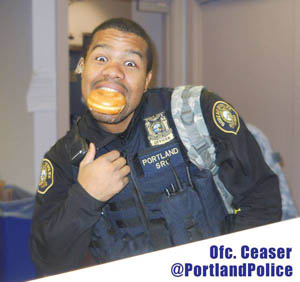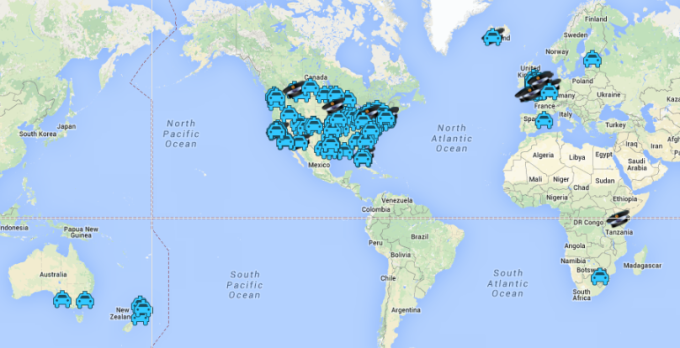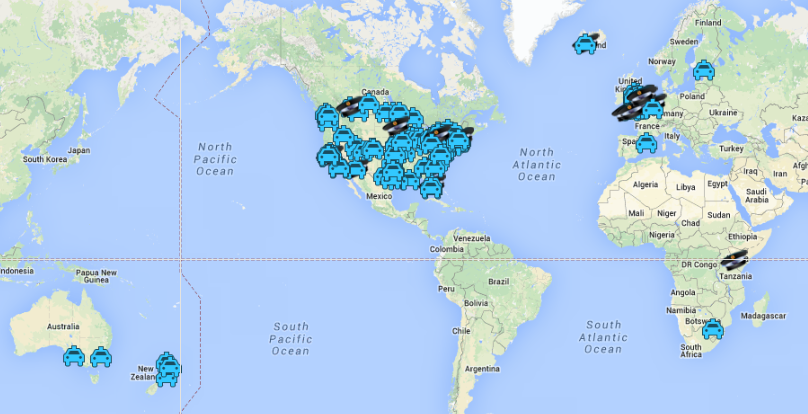How much thought do you put into everything you post to social media? Do you think about how it will be received? Or if maybe your followers will share it among their friends? When you tabulate your number of followers each month, do you fantasize about all of them re-sharing your message far and wide?
It all comes down to how much value or “social currency” your posts provide your followers.
People go on to social networks to catch up with their friends, but they also go there to share and consume great content. People love to find great things to share with their friends. They love to get the praise of likes, comments and retweets from their shares.
So how do you make sure it’s your content that gets shared?
Educate, Surprise or Entertain
Think of social currency as social money you are giving to your audience to spend on their friends. When you have a post that is funny, provides useful information, is a little shocking or provides critical information — it will get shared.
Let’s look at a few examples.
Promoting a Community Event
Here is something that every law enforcement agency has to do, promote a community event. Let’s take this example of a typical boring tweet and one that might provide a little more social currency.
Boring
“Prescription Drug Turn-in this Saturday at Precinct 1 from 12-2. http://link.com”
How can we make that more interesting? How can we educate and maybe even shock people a little bit. Let’s take a statistic from the press release and make that the post instead.
“One person dies every 19 minutes from prescription drug abuse. Teenagers access prescriptions from medicine cabinets. http://link.com”
That is the same link as before; but I bet more people will click the link, share it with their friends and may even learn that there is a need for such an event. There is nothing wrong with putting out both posts or even more variations of them leading up to the event. You will certainly find one that resonates with your followers.
Humanize Your Police Officers
One of my goals on social media is to humanize my police officers. The use of self-deprecating humor and embracing stereotypes are great ways to show that police officers have a sense of humor and are people too. Here are two examples of humanizing an officer on National Donut Day.
Boring, but typical post:
“It’s National #DonutDay – our favorite day of the year.”
That certainly embraces a stereotype and would actually get a few likes. But let’s solicit the agency for a picture and see what they send us back.
BINGO!
This awesome picture truly embraces the stereotype. It embraces it to the point where it will shock your audience. It humanizes, is funny and is very very shareable.
Police officers are silly people and if you ask them for assistance in make your social media content matter; they will often bend over backward to make you happy.
Building Your Audience
The best way to grow your audience is to provide your current followers with enough social currency to get you retweeted and shared on a consistent basis. This puts you in front of many new people that currently aren’t following you. Also the content that they are seeing from you is your best stuff because it is what your fans are choosing to share with their friends.
The challenge is to keep shareable content flowing every day. Something easy you can do is brainstorm a month’s worth of short posts. Have these posts ready and try to put out at least one a day.
Posts that work well for law enforcement agencies typically have to do with crime prevention, emergency preparedness and traffic safety.
Here are a few example posts that you can steal for your social channels. You will quickly get an idea about what kinds of content your audience likes to share and then create more posts so you can get shared far and wide with daily consistency.
Parents: Please don’t threaten to call the cops on your children as a form of discipline. You should teach your kids that the cops are the good guys; people they can go to when they need help.
On average, more than three women and one man are murdered by their intimate partners in this country every day. #DomesticViolence
The leading cause of death for teenage drivers in the U.S. is now #texting and driving, not drinking and driving.
Be ready for an earthquake with this app from @RedCross. Receive alerts and notifications. Prepare your family. http://rdcrss.org/Qahc20
Don’t attract thieves to your car by leaving sat navs, loose change, clothes or CDs on display #thinksafe
Your cell phone can be a lifeline during/after an emergency. Keep an extra battery or solar-powered charger w/ you so it stays powered up!
Reminder: Kids, bullying is unacceptable! It hurts, promotes negative behavior, and has no place in our schools/community
The key that you should remember about social currency, is to think about how the posting will come across to your audience. Put yourself in their shoes. Would you click this link? Would you share it with your friends? How can you make it more interesting?
 Jason Ruby (@LESMCoach) is a social media coach for law enforcement based in Portland, Oregon. He is a member of the Portland, Oregon Police Bureau (@PortlandPolice) communications unit where he comes up with fun ways to engage the public with social media.
Jason Ruby (@LESMCoach) is a social media coach for law enforcement based in Portland, Oregon. He is a member of the Portland, Oregon Police Bureau (@PortlandPolice) communications unit where he comes up with fun ways to engage the public with social media.























![PUBLICEYEmessage[4][1]](http://connectedcops.net/wp-content/uploads/2013/11/PUBLICEYEmessage41-300x62.jpeg)